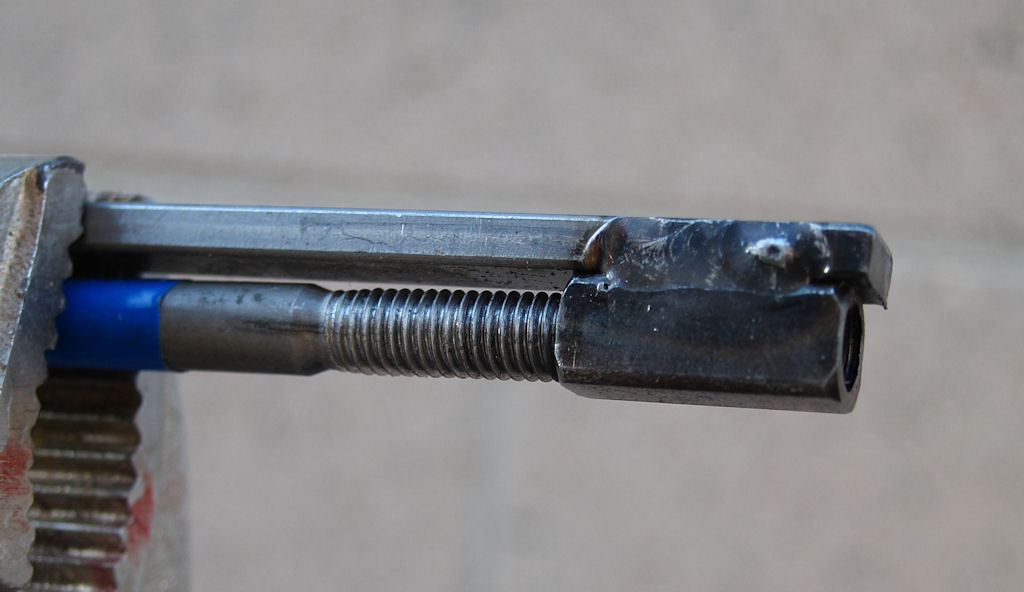Fastforward to mid 2013 and G&L updated their trussrod design again. The basic premise of the new design is the same as the previous design - no crush pressure on the neck, only lateral pressure to counteract string tension. However, the new trussrod is a double-action type. It can not only apply back bow just like the previous version, but can also apply forward bow. Because of all the tension bass strings apply to our long necks, we're not going to be terribly concerned with adding forward bow unless we run into a hellishly strong quarter-sawn neck. Guitar players, I'm told, may run into a need at times.
To help folks get their heads wrapped around the idea of how this new trussrod works, I'll copy & paste my explanation from a PM:
Ken in a PM wrote:Think about how a turnbuckle works. You have an elongated loop kind of thing with threaded holes on each each, and the threads on one end are lefthand. Into these threaded holes go a pair of eyebolts, one with lefthand threads. If the eyebolts are held from turning and the elongated loop is turned, both eyebolts go in or out of the loop equally depending on the direction that the loop is turned. Okay so far?
The new trussrod operates in a fashion similar to a turnbuckle. There's a threaded sleeve on each end, one with lefthand threads. There is a rod with appropriate threads on each end that is assembled to the threaded sleeves after which the threaded sleeves are welded to the flat bar. To finish off, the adjuster is welded to one end of the rod. Violà! One double action trussrod.
Okay - pictures. We're a visual bunch and I know how it works. No pics, no trussrod. The images are all processed from from 10MP RAW images. RAW to TIF to crop & resize to JPG.
First up is the business end - the adjuster. Same 4mm allen socket. Note the lefthand threads. When the rod is turned to the right, the threaded sleeve moves to the right.

Next is the tailend. There is no adjusting this end, as it's embedded in the neck. Note the righthand threads. When the rod is turned to the right (relative to the adjuster) the threaded sleeve moves to the left.

This is the whole rod in a relaxed state. There is no tension in either direction.

http://www.bassesbyleo.com/images/2013_ ... axed_1.jpg
http://www.bassesbyleo.com/images/2013_ ... axed_3.jpg
This is the whole rod in a state that would be applying back bow to a neck.

http://www.bassesbyleo.com/images/2013_ ... kbow_1.jpg
http://www.bassesbyleo.com/images/2013_ ... kbow_3.jpg
This is the whole rod in a state that would be applying forward bow to a neck.

http://www.bassesbyleo.com/images/2013_ ... dbow_1.jpg
http://www.bassesbyleo.com/images/2013_ ... dbow_3.jpg
The previous trussrod only acted on the flat bar from one end. The new trussrod acts on the bar from both ends. What players are going to find is that adjustment with the new trussrod will be more sensitive than a single-action trussrod because it takes half the adjuster turns to get the same deflection as the single-action trussrods. For example, the extremes of deflection you see in both directions in the images come from about 1 turn in total. Compare this to the single-action in my previous pictorial, which took about a turn for the maximum deflection shown. Actual in-use turns will be higher because the trussrods work against the wood, but the old adage, "A little goes a long way" will be in play here.
So there you have it. These are shipping now.
Ken...
